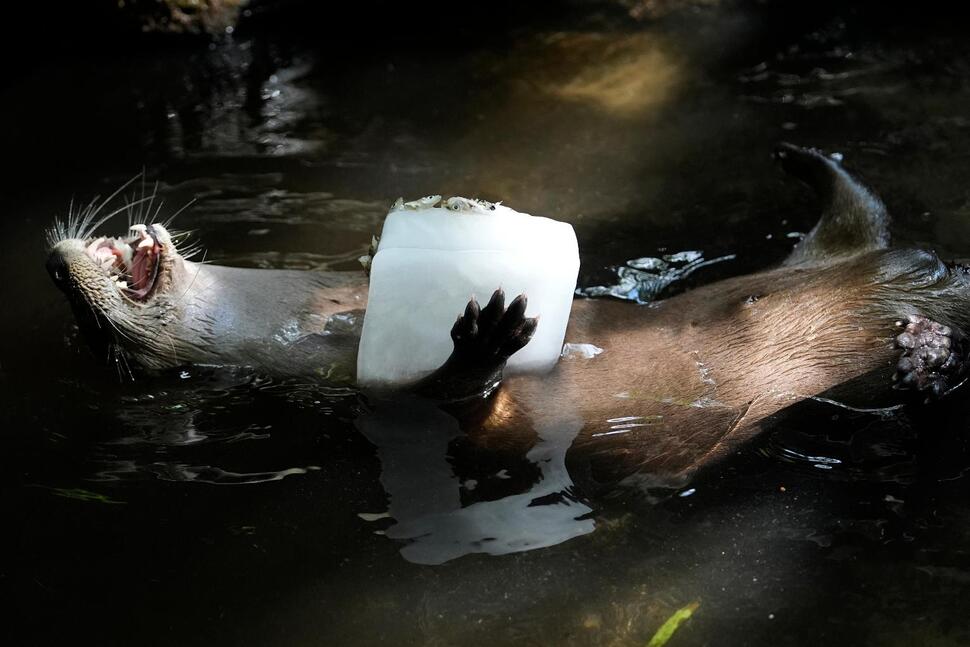Zoos in hot weather states are working hard during the summer to keep their animals cool
WEST PALM BEACH, Fla. (AP) — Malayan tigers and Aldabra tortoises, though native to hot and humid environments, still appreciate a frozen treat on a sweltering Florida summer day.
This month, temperatures in South Florida have soared into the upper 90s Fahrenheit (mid-30s Celsius), with humidity around 70%, resulting in “feels like” temperatures consistently exceeding 100°F (38°C).
To help their animals stay cool, staff at the Palm Beach Zoo & Conservation Society employ various techniques. Zookeepers toss large blocks of ice into the black bear enclosure, allowing the animals to wallow and cool off. They also chill the bears’ pool to a refreshing 74°F (23°C). The otters receive ice blocks and frozen fish to play with and eat.
Tigers enjoy more creative cooling treats: frozen cow bones embedded in ice, paired with frozen goat milk. Additionally, these big cats relish swimming as a way to beat the heat.
Giant tortoises, native to the Indian Ocean’s islands, appreciate cool showers from a hose, which they can feel through their shells.
“Even though all of our animals are acclimatized to the South Florida weather, they look for ways to cool off during the hot days, just like we do,” said Mike Terrell, the zoo’s curator of animal experiences. “All of our animals here at the zoo were specifically chosen because they’re accustomed to warm climates. So, they’re perfectly content in high heat and humidity.”
Zoo visitors enjoy watching the animals cool down, with children often pressing their faces against the glass for a better view, Terrell noted.
“We absolutely love those nose prints,” Terrell said.
Determining the animals’ preferred cooling methods involves some trial and error, he explained.
“They really tell us what they like,” Terrell said. “We can make our best guesses, but if we provide something they don’t seem to enjoy or interact with, we won’t continue to use it.”
